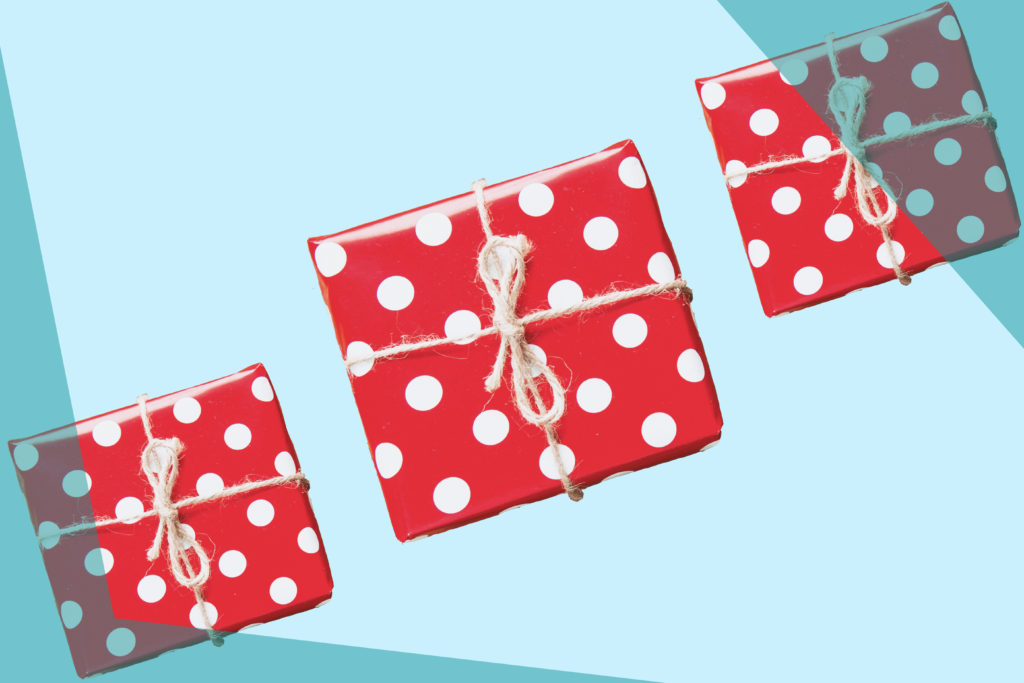Spread holiday cheer—without the trash—with thoughtful and
environmentally conscious gifts.
By Regine Malibiran
The holidays are a time for cherishing loved ones, great food and joyful music. But in the midst of all the holiday cheer, there’s a consequence that tends to go unaddressed in many households: gift-material waste.
According to The Use Less Stuff Report, Americans discard 25 percent more trash between Thanksgiving and New Year’s Day than any other time of year, amounting to 25 million tons of extra waste. Included in all that waste is $11 billion worth of packaging material, more than 2.6 billion holiday cards, 15 million Christmas trees and 38,000 miles of ribbon—enough to tie a bow around Earth!
“When this holiday material is discarded, it can be headed to landfills, where…it undergoes bacterial decomposition, which produces ‘landfill gas,’ a mixture of predominantly greenhouse gases, including methane, carbon dioxide and water vapor,” reports the National Environmental Education Foundation. “Methane, a greenhouse gas with an impact on climate change more than 25 times greater than that of carbon dioxide, is the second-most prevalent greenhouse gas emitted in the United States from human activity. Carbon dioxide, the other major ingredient in landfill gas, is the first.”
The effect of single-use waste is a year-round concern, but the significant spike during the last few months of the year makes avoiding gift-material waste an easy way to be more environmentally conscious.
Kathy Terry, co-founder of Austin-based P. Terry’s Burger Stand, recently launched an app to address this exact modern problem. inLieu is “the ultimate platform for charitable giving” and allows users to “make donations in lieu of purchasing material gifts.” The idea for inLieu sprouted from one of Terry’s own gift-giving experiences. One holiday season, she found herself without an appropriate gift for the host of an upcoming holiday party and no time to go shopping before the event. Terry had to make a choice: show up empty-handed give a dear friend a gift she knew she didn’t need.
“I wanted to show up with something meaningful,” Terry shares. “And what I had access to that day was not going to be meaningful. Instead of just checking the box and saying, ‘Well, this will do,’ I wanted to find a better solution.”
After begrudgingly giving her friend a scented candle, Terry resolved to build what she ultimately couldn’t find: a way to redefine gift-giving to make it more socially impactful while still retaining the thoughtful intention of the giver. But habits are hard to break, as Terry discovered after launching inLieu.
“There is a need to show your love and your gratitude and your appreciation for people. That’s real for everybody. But how that shows up is different,” she says. “And how and what is acceptable is different. We’re conditioned as a society to consume.”
The National Retail Federation reports holiday retail spending has consistently increased in the past two decades(with the only exception being 2008 because of the Great Recession), growing from $416.4 billion in 2002 to $717.5 billion in 2018. The NRF also estimates holiday spending will increase by between 3.8 percent and 4.2 percent in 2019. With not even a recession able to stop it for long, holiday spending clearly shows no signs of slowing down. The question then becomes: How can we focus more of those dollars into environmentally conscious practices?
With inLieu, gift givers can get in the holiday spirit of charity and goodwill, give thoughtful and personal presents and feel good about reducing their carbon footprint.
“[When I donate,] I’m helping make an impact in a place that’s really, really important to that person,” Terry says. “I have a deeper connection with my friends. I’m giving to social impact to make a change in the world. And I’ve just helped save the planet. It’s a no-brainer.”
HOW TO START THE CONVO
Get creative with this year’s gifts. In addition to giving donations in lieu of material gifts, there are other environmentally conscious ways to gift. Experiential presents like concert and movie tickets, as well as homemade gifts, reduce your carbon footprint while showing your loved ones how much they mean to you.
Avoid trendy gifts. Do you remember the fidget-spinner craze a few years ago? Consumers have since moved on, but those millions of trendy plastic toys are still out there. When giving material gifts, consider how long the recipient will actually use it—and how much waste it will create.
Use packaging alternatives. Save some trees by using recycled wrapping paper and reusable packaging like decorative tins and boxes.
Go digital. Skip the post office and send holiday cards online instead of through the mail.
HOLIDAY WASTE BY THE NUMBERS
25 MILLION TONSAmericans produce an additional 25 million tons of trash during the holiday season, mostly from packaging and gift-wrapping materials. This amounts to about 1 million extra tons of garbage each week.
2.6 BILLIONThe National Environmental Education Foundation notes Americans buy more than 2.6 billion Christmas cards each year, enough to fill a football field 10 stories high.
3 PRESENTS According to The Use Less Stuff Report, if every American family wrapped just three holiday gifts in reused materials (recycled wrapping paper, Sunday comics, magazine pages), it would save enough paper to cover 45,000 football fields.



